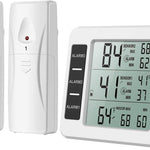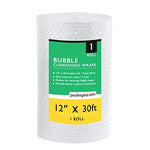You have no items in your shopping cart.
Maintaining a facility is a crucial aspect of ensuring its longevity, operational efficiency, and a safe working environment. Whether it's a manufacturing plant, office building, or educational institution, regular maintenance is essential to prevent costly repairs, improve productivity, and extend the lifespan of the facility. In this comprehensive guide, we will explore the importance of maintenance facilities and provide practical tips and strategies for effective facility management. Let's dive in!
Table of Contents
- The Significance of Maintenance Facilities
- Creating a Maintenance Schedule
- Conducting Regular Inspections
- Essential Maintenance Tasks
- Implementing Preventive Maintenance Measures
- Addressing Repairs and Upgrades
- Ensuring Safety and Compliance
- Maximizing Energy Efficiency
- Leveraging Technology for Facility Management
- Training and Skill Development for Maintenance Staff
- Delegating Responsibilities and Streamlining Communication
- Outsourcing Maintenance Services
- Tracking and Managing Maintenance Records
- Evaluating Performance and Continuous Improvement
- FAQs: Your Facility Maintenance Questions Answered
- Conclusion
Maintenance Facility: The Backbone of Operational Success
A maintenance facility serves as the backbone of any organization, providing critical support to ensure smooth operations and optimal functionality. It encompasses various elements, including the physical infrastructure, equipment, tools, and skilled personnel necessary for effective maintenance and repairs. By establishing a well-equipped and organized maintenance facility, businesses and institutions can proactively address issues, minimize downtime, and optimize overall performance.
Creating a Maintenance Schedule
A structured maintenance schedule is essential for keeping your facility in top condition. It outlines routine tasks, inspections, and necessary repairs that need to be performed regularly. By adhering to a schedule, you can prevent small issues from escalating into major problems and reduce the risk of unexpected breakdowns. The frequency of maintenance activities will depend on factors such as the facility's size, equipment complexity, and industry standards.
To create an effective maintenance schedule:
- Identify critical areas and equipment that require regular attention.
- Determine the optimal intervals for inspections, cleaning, lubrication, and other maintenance tasks.
- Utilize computerized maintenance management systems (CMMS) or software tools for better organization and scheduling.
- Allocate resources and manpower based on the workload and skill requirements of each task.
- Regularly review and update the maintenance schedule to accommodate changes in equipment, production demands, or seasonal variations.
Conducting Regular Inspections
Routine inspections are vital for identifying potential issues, monitoring equipment performance, and ensuring compliance with safety regulations. By conducting thorough inspections, you can detect early warning signs of wear and tear, malfunctioning components, or hazardous conditions that may compromise productivity or endanger personnel. Inspections should encompass all aspects of the facility, including electrical systems, plumbing, HVAC, structural integrity, and fire safety measures.
Key steps for conducting effective inspections:
- Develop a checklist tailored to your facility's specific requirements and industry standards.
- Train maintenance personnel on proper inspection techniques and documentation procedures.
- Perform visual inspections, functional tests, and measurements as necessary.
- Document and prioritize identified issues, categorizing them based on urgency and potential impact.
- Schedule repairs and maintenance tasks promptly, considering their criticality and available resources.
Essential Maintenance Tasks
A well-maintained facility requires a range of essential maintenance tasks to keep everything in working order. These tasks can include:
- Cleaning and sanitizing: Regular cleaning of floors, walls, windows, and restrooms to maintain a hygienic environment.
- Lubrication: Applying lubricants to machinery and equipment to reduce friction and prevent excessive wear.
- Filter replacement: Changing filters in HVAC systems, air purifiers, and water filtration systems to ensure optimal performance and air quality.
- Calibration: Calibrating instruments and controls to maintain accuracy and reliability.
- Pest control: Implementing measures to prevent and control pests, such as regular inspections, sealing entry points, and using appropriate pesticides.
- Waste management: Establishing proper waste disposal protocols, recycling programs, and hazardous material handling to comply with environmental regulations.
- Landscaping and exterior maintenance: Maintaining outdoor areas, including landscaping, parking lots, and signage, to enhance curb appeal and ensure safety.
Implementing Preventive Maintenance Measures
Preventive maintenance plays a crucial role in minimizing unexpected breakdowns and extending the lifespan of equipment and infrastructure. By addressing issues proactively, you can avoid costly repairs, reduce downtime, and enhance overall productivity. Here are some key strategies for implementing preventive maintenance measures:
- Develop a comprehensive preventive maintenance plan based on equipment manufacturer recommendations, historical data, and industry best practices.
- Establish a schedule for routine inspections, cleaning, lubrication, and component replacements.
- Create maintenance checklists and standardized procedures for consistent execution.
- Implement condition-based monitoring techniques, such as vibration analysis or thermal imaging, to detect early signs of equipment failure.
- Utilize predictive maintenance technologies and software systems to analyze data and generate actionable insights.
- Regularly train maintenance staff on preventive maintenance techniques and encourage a culture of proactive problem-solving.
Addressing Repairs and Upgrades
Despite preventive measures, equipment breakdowns and facility repairs are inevitable. Swiftly addressing these issues is crucial to minimize disruptions and maintain operational efficiency. Additionally, periodic upgrades and modernization efforts can enhance productivity, energy efficiency, and compliance with evolving regulations. Consider the following strategies when addressing repairs and upgrades:
- Prioritize repairs based on urgency, potential impact on operations, and safety considerations.
- Establish a system for reporting and documenting repair requests to ensure timely action.
- Maintain an inventory of critical spare parts and establish relationships with reliable suppliers.
- Evaluate the feasibility of repair versus replacement for aging or obsolete equipment.
- Explore opportunities for energy-efficient retrofits, such as upgrading lighting systems or installing smart HVAC controls.
- Regularly review and update maintenance budgets to allocate resources for repairs and upgrades.
Ensuring Safety and Compliance
Maintaining a safe working environment and complying with regulatory standards is paramount for any facility. Failure to prioritize safety can lead to accidents, injuries, legal liabilities, and damage to reputation. Implement the following practices to ensure safety and compliance:
- Conduct regular safety training sessions for all employees, focusing on hazard identification, emergency protocols, and proper equipment usage.
- Develop and communicate safety policies and procedures clearly, emphasizing individual and collective responsibility.
- Regularly inspect safety equipment, fire suppression systems, and emergency exits to ensure their functionality and accessibility.
- Establish preventive maintenance programs for safety-related equipment, such as fire alarms, sprinkler systems, and personal protective equipment (PPE).
- Stay informed about relevant safety regulations and update policies accordingly.
- Encourage a culture of safety awareness and empower employees to report potential hazards or safety concerns.
Maximizing Energy Efficiency
Energy consumption is a significant cost factor for facilities, and optimizing energy efficiency can result in substantial savings. Moreover, reducing your facility's environmental footprint is increasingly important for sustainability and corporate social responsibility. Here are some strategies for maximizing energy efficiency:
- Conduct an energy audit to identify areas of high consumption and potential energy-saving opportunities.
- Upgrade to energy-efficient lighting systems, such as LED bulbs or occupancy sensors, to reduce electricity usage.
- Optimize HVAC systems by performing regular maintenance, cleaning filters, and implementing smart controls.
- Improve insulation and weather sealing to minimize heat loss or gain.
- Implement power management strategies, such as timers or automated shutdown systems for non-essential equipment.
- Educate employees about energy-saving practices, such as turning off lights when not in use or adjusting thermostat settings.
Leveraging Technology for Facility Management
Technology can greatly enhance facility management by streamlining processes, improving communication, and providing valuable insights for decision-making. Here are some ways to leverage technology effectively:
- Implement computerized maintenance management systems (CMMS) to automate work order generation, track maintenance history, and schedule preventive tasks.
- Utilize building automation systems (BAS) to monitor and control HVAC, lighting, and security systems centrally.
- Adopt mobile applications or digital platforms for maintenance staff to access work orders, update records, and communicate in real-time.
- Utilize data analytics and predictive maintenance software to identify patterns, detect anomalies, and optimize maintenance strategies.
- Explore Internet of Things (IoT) devices and sensors for real-time monitoring of equipment performance and environmental conditions.
- Invest in facility management software that integrates various functions, such as asset management, space planning, and energy management, for better overall control.
Training and Skill Development for Maintenance Staff
A knowledgeable and skilled maintenance team is crucial for effective facility management. Providing training and opportunities for skill development ensures that your staff can handle diverse maintenance tasks and utilize the latest technologies. Consider the following approaches to enhance the capabilities of your maintenance staff:
- Identify training needs based on current skill levels, technological advancements, and industry requirements.
- Provide formal training programs and certifications for specialized areas, such as electrical systems, plumbing, or equipment maintenance.
- Encourage cross-training to broaden employees' skill sets and enable them to handle multiple maintenance responsibilities.
- Offer continuing education opportunities, workshops, or webinars to keep employees updated on the latest maintenance practices and technologies.
- Foster a learning culture by encouraging employees to share knowledge and best practices with their colleagues.
- Recognize and reward exceptional performance and encourage career growth within the maintenance team.
Delegating Responsibilities and Streamlining Communication
Efficient communication and clear delegation of responsibilities are essential for effective facility management. Establishing clear lines of communication and optimizing workflows can prevent delays, minimize confusion, and ensure that maintenance tasks are executed promptly. Consider these strategies to enhance communication and delegation:
- Clearly define roles and responsibilities within the maintenance team, establishing clear reporting structures.
- Implement a system for receiving and prioritizing maintenance requests, such as a centralized help desk or work order system.
- Foster open communication channels, encouraging staff to report issues, suggest improvements, and provide feedback.
- Regularly conduct meetings or huddles to discuss ongoing maintenance projects, share updates, and address concerns.
- Leverage digital tools and platforms for seamless communication, such as instant messaging apps, project management software, or intranet portals.
- Establish performance metrics and key performance indicators (KPIs) to evaluate communication effectiveness and identify areas for improvement.
Outsourcing Maintenance Services
In some cases, outsourcing maintenance services can be a strategic decision to complement in-house capabilities or address specific expertise gaps. Outsourcing can provide access to specialized knowledge, reduce workload, and offer cost-effective solutions. Consider the following factors when evaluating outsourcing options:
- Assess the feasibility of outsourcing specific maintenance tasks based on complexity, cost, and available resources.
- Identify reputable service providers with proven expertise and a track record of successful facility management.
- Clearly define expectations, deliverables, and service level agreements (SLAs) in contracts or agreements with outsourcing partners.
- Establish effective channels of communication and ensure regular updates on project status and performance.
- Continuously monitor the quality of outsourced services and address any issues promptly.
- Regularly evaluate the cost-effectiveness of outsourcing arrangements and consider alternative options when necessary.
Tracking and Managing Maintenance Records
Maintaining comprehensive records of maintenance activities, repairs, and inspections is vital for tracking progress, ensuring compliance, and making data-driven decisions. Proper record keeping allows for historical analysis, identifying patterns, and predicting future maintenance needs. Consider the following practices for effective record management:
- Implement a digital record-keeping system, such as a CMMS or a dedicated database, to centralize maintenance records and facilitate easy retrieval.
- Standardize record formats and documentation procedures to ensure consistency and ease of interpretation.
- Include essential details in maintenance records, such as equipment identification, date and time of maintenance tasks, performed activities, and materials used.
- Regularly review and update maintenance records to reflect accurate information and incorporate any changes or updates.
- Maintain a log of completed repairs, warranty information, and spare parts inventory for reference and future planning.
- Leverage data analytics tools to analyze maintenance records and identify trends, patterns, or recurring issues for proactive maintenance strategies.
Evaluating Performance and Continuous Improvement
Evaluating the performance of your maintenance operations is crucial for driving continuous improvement and optimizing resource allocation. Regular assessments and data-driven analysis can help identify areas for enhancement, streamline processes, and ensure that maintenance efforts align with organizational goals. Consider the following approaches for evaluating performance and fostering continuous improvement:
- Establish key performance indicators (KPIs) that align with your facility's objectives, such as mean time between failures (MTBF), mean time to repair (MTTR), or overall equipment effectiveness (OEE).
- Regularly monitor and track performance against established KPIs, utilizing data from maintenance records, work orders, and operational metrics.
- Conduct regular audits or assessments of maintenance processes and workflows to identify bottlenecks, inefficiencies, or areas for improvement.
- Encourage feedback from maintenance staff, end-users, and other stakeholders to gain insights into challenges and potential solutions.
- Collaborate with other departments or external experts to benchmark best practices and explore innovative maintenance strategies.
- Foster a culture of continuous learning and improvement, encouraging experimentation, knowledge sharing, and implementation of new ideas.
FAQs: Your Facility Maintenance Questions Answered
Q: What is a maintenance facility?
A: A maintenance facility is a dedicated space or department within an organization responsible for the upkeep, repairs, and overall maintenance of a facility's infrastructure, equipment, and systems.
Q: Why is facility maintenance important?
A: Facility maintenance is vital for ensuring operational efficiency, extending the lifespan of equipment and infrastructure, preventing costly repairs, and maintaining a safe working environment.
Q: How often should facility maintenance be performed?
A: The frequency of facility maintenance tasks depends on various factors, such as the facility type, equipment complexity, and industry standards. It is advisable to establish a maintenance schedule based on manufacturer recommendations, industry best practices, and the specific needs of your facility.
Q: Can facility maintenance improve energy efficiency?
A: Yes, facility maintenance plays a significant role in maximizing energy efficiency. Regular inspections, equipment maintenance, and implementing energy-saving measures can help reduce energy consumption and lower operational costs.
Q: Should facility maintenance be outsourced?
A: Outsourcing facility maintenance services can be a strategic decision, especially when specialized expertise is required or to complement in-house capabilities. It allows organizations to access external resources, reduce workload, and benefit from cost-effective solutions.
Q: How can technology improve facility management?
A: Technology can enhance facility management by streamlining processes, improving communication, and providing valuable insights for decision-making. Computerized maintenance management systems (CMMS), building automation systems (BAS), and data analytics software are examples of technologies that can optimize facility management practices.
Conclusion
Effective facility maintenance is essential for ensuring the longevity, efficiency, and safety of any organization's physical infrastructure. By establishing a well-equipped maintenance facility, implementing preventive measures, and utilizing technology, businesses and institutions can proactively address maintenance needs, reduce downtime, and optimize overall performance. Remember to create a comprehensive maintenance schedule, conduct regular inspections, and prioritize safety and compliance. Continuously evaluate performance, embrace new technologies, and foster a culture of continuous improvement. By investing in facility maintenance, you invest in the long-term success of your organization.








